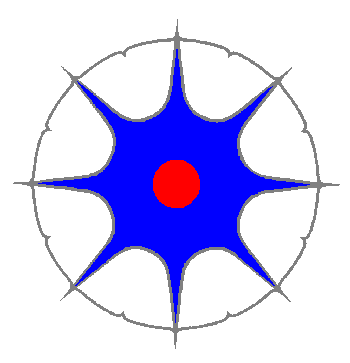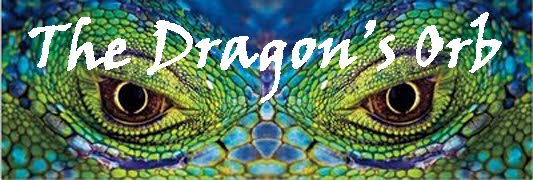
I have been pondering the name of art use in the Tomiki lineage practice. Interesting that it is the only major branch of Aikido that got named after a teacher, rather than an organizational or art name. Apparently Kenji Tomiki 富木 謙治 wanted neither his name or the word ryu attached to his art. Of course now we call it Tomiki Aikido as a blanket term, and some call it Tomiki Ryu when we mistakenly think of it as a koryu art form and misappropriate the term Ryu 流where it should not be used.
Nariyama Shihan recalls talking to Kenji Tomiki about the name of the system.
"The use of the terms Tomiki-ryu, Tomiki System, etc. prompted an austere look and resolute manner, “It was never my aim to create competitive aikido for only one specific group”. I can recall his politeness and the things he used to say about his cherished ideas. So why was Tomiki Sensei so strongly against having his name used? I think that this was because he had much more sincere and more noble ideas concerning aikido and budo. At that time he mentioned the name of Kano Shihan to use as an example, “Kano Sensei aimed at creating judo as a modernization of budo. Although he established judo, we never hear term Kano Judo.” Referring to own’s name in this way is shortsighted and won’t allow budo to change at all. Tomiki Sensei did not boast about competitive aikido belonging to him but believed it was connected to the development of aikido as a whole and for the benefit of everyone. He believed strongly that without this process aikido would not modernize. This way of thinking was perhaps why he was particular about the name."

Kenji Tomiki clearly did not want his name to be used. But he did name his art. He called it Shodokan Aikido 昭道館合気道. After Tomiki Sensei's death the organization of dojos he created fractured into several pieces and Shodokan 昭道 became a political name of one organization rather than a term he apparently intended it for. It seems clear he meant it to be the name of his art.
So if Tomiki Sensei would have had the choice do you think he would have wanted all of the students in his lineage to say they study Shodokan Aikido? It seems from Nariyama's essay that seems to be the case. I don't expect this blog to change much of the name/political landscape but it is an interesting question to ask ourselves.
Anyhow, the name of Kenji Tomiki's art was/is Shodokan 昭道館
I would like to take a look at the word and see if Kenji Tomiki buried a gem of wisdom in the word she chose. Some of the masters of the brush I have met believe words and strokes contain ki. Tomiki was himself a calligrapher, so maybe a piece of his mind rests in the characters he chose. Fumiaki Shishida Shihan, the noted scholar and Tomiki lineage author wrote that Shodokan means 'place for identifying the way'. While I find it difficult to argue with such a respected researcher, he might have been translating a poetic interpretation rather than a literal translation to English. He goes on to write...
"The meaning of Shodokan is 'place for identifying the way'. The first character, 'sho' comes from the Showa period in which Shodokan was founded and is also found in the name of Uchiyama's company. The second character, 'do' comes from Kano's Kodokan. (clip) On 28th March 1976, Uchiyama provided a 70 tatami dojo with Tomiki as the head."
While I find the insights Shishida writes about the name of the Shodokan fascinating, I want to dive deeper. Much of Tomiki's life was spent in the Showa era, Showa era (1926.12.25-1989.1.7)so I am inclined to believe it might not have been THAT special to him. The company that donated space was an interesting factor. What about this kanji resonated with Tomiki so deeply to name his headquarters and art this? Lets look at the literal translation.

Some of the secondary or lesser used definitions in Japan are / clear / bright / plain / obvious / Showa era (1926.12.25-1989.1.7)
In Chinese definitions are bright / brightness / luminous / prominent / eminent / evident / obvious / to make open / to show / to display
Here are some ancient forms of the character.


The other part to the name Shodokan 昭道館 are the far more common budo characters (道館), same as seen in the name of Judo's headquarters Kodokan 講道館.
道 -ち - 1: (Archaism) way; road; (Noun suffix)2: way to ...; road to ...
館-かん-house; hall; building
Luminous. It seems to resonate with the poetic teaching of his aikido teacher Morihei Ueshiba. Indeed I have read, light or shine was one of Ueshiba's last calligraphy pieces he wrote before he passed. Even the symbol of the Shodokan is a centered by the sun/fire with a luminous halo - representing the balance of water.

So far what it is worth, it is this lowly blogger's opinion that Tomiki's art is the 'luminous way building/hall' or the 'luminous path building/hall'. I think all translations search a purpose to help guide us a little further down the path. Due to the modern political entanglements, I would not call my art Shodokan, but I respect the name and poetry that the founder of our style called his art.
As a final thought, there is a Tomiki website that states because Tomiki was a calligrapher and practiced shodo 書道 (brush-way) he named his art Shodokan 書道館. This is an understandable mistake for us English speakers, but it is absolutely incorrect. That being said calligraphers are often immersed in poetry and multi meanings, and I suppose this could be another layer behind the riddle of naming of the art of Tomiki Sensei.







Eric: Nice article but some info on the patch as I seem to remember. The patch was not intended to represent water, although based on how your description it could be taken as such. From what I was told the red dot in the center was to represent the hara or the "one point" or the physical center of the body and the 8 points of the star represent the 8 directions of happo-no-kusushi (8 direction of off-balance). Then on the inside of the circle that surrounds the star are 8 little "dents" or "nipples" (pointing inward towards the center or red-dot)that were supposed to represent an additional 8 directions of off-balance for a total of 16. My Sensei told a semi-apocryphal story once about being in Japan and training and having a very senior Sensei (about 9th or 10th) talk about being able to see and to use 32 directions of happo-no-kuzushi. My Sensei turned to another player on the mat who was very senior but not as senior apparently as the first and told him that the most he could see was only 8 directions of kuzushi and sometimes maaaybbeeee 16 if everything was really clicking along and he was having a really good day. The other Japanese Sensei turned to my Sensei and said that 8 (maybe 16) was all he could see too but that if a 9th or 10th dan walked up and started talking about using 32 then maybe there really are 32; only they weren't experienced enough to see 32 so maybe they should just take him at his word and get back to work (looking for those 32 happo-no-kuzushi).
ReplyDeleteWilkinson Sensei,
ReplyDeleteThis comes from the JAA website
http://homepage2.nifty.com/shodokan/en/symbol.html
The inspiration for this symbol comes from one of the old texts of Kitoryu Jujitsu called Ten no Maki (Scroll of Heaven). This text explains that the characters meaning rise and fall represent the opposites active and passive respectively. Being active can lead to victory but so can being passive by weakness overcoming strength.
The character meaning rise signifies the power of fire, the character meaning fall signifies the power of water. The sun is a source of energy and water has no form or thought but simply adapts to its environment. However, water has the power to outrival everything, to nourish all things yet remain humble. These are the strengths of the most virtuous people and it is said that virtue is the same as water in this sense.
This symbol is composed of red representing fire, blue representing water and white representing infinite space.
Kenji Tomiki
Head of Shodokan
28th March 1976
I am Bob FW, Shodokan and BAA 8th Dan. I follow the Shodokan branch because, even though I am now one of the very few (if any) remaining Aikidoka from the earliest days of Aikido in England, I chose Aikido not as a sport (into which it is sadly developing) but because Shodokan aikido was closest to the original concept of aikido as a true martial art. I would like to see it continue now as a search for self, and as a branch of Japan's martial arts that can continue into the future led by teachers who who are honest to its' roots and its' followers. I am very impressed by Tetsuro Nariyama as a leader for I feel that he now stands closest to the original aims of O'Sensei Aikido by combining competence of technique with historical accuracy.
ReplyDelete